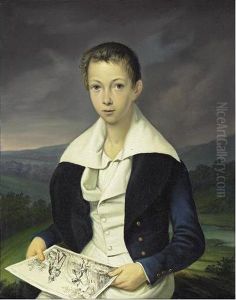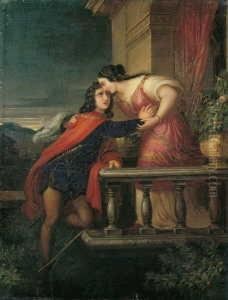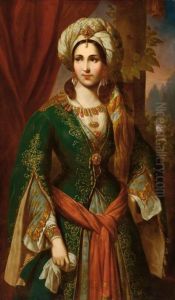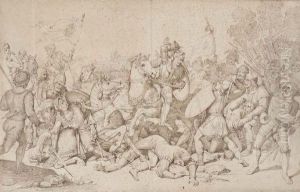Carl Schnorr Von Carolsfeld Paintings
Julius Schnorr von Carolsfeld was a German painter and designer, renowned for his work in the Romantic style, which was part of a broader artistic movement that originated in Europe toward the end of the 18th century. Born on March 26, 1796, in Leipzig, Julius was part of a family deeply involved in the arts; his father, Johann Veit Schnorr, was a draughtsman and painter, and his brother, Ludwig Ferdinand, was also an artist. Julius’s full name often leads to confusion as he is sometimes mistakenly called 'Carl Schnorr von Carolsfeld', but his first name was Julius.
Julius Schnorr von Carolsfeld's early education was influenced by his father's artistic background. He first studied under his father and then attended the Vienna Academy from 1815 to 1817. Here, he was influenced by the work of the German painter Heinrich Füger and began to develop his own distinctive style. In 1818, Julius traveled to Rome, which was a hub for artists at the time. There, he joined a group of German artists called the 'Nazarenes', who sought to revive the spirituality and sincerity they admired in medieval and early Renaissance art.
The Nazarenes worked together on several projects, including the decoration of the Casa Bartholdy (1816-1817) and the Casino Massimo (1820-1828) in Rome, where Schnorr contributed frescoes. His stylistic approach during this period was characterized by clear contours, bright colors, and attention to detail. These elements became trademarks of his work and helped establish his reputation.
Aside from his frescoes, Julius was also known for his designs for stained glass windows, book illustrations, and his work on a series of woodcuts for a Bible commissioned by the publisher Georg Wigand. His illustrations for Ludwig Tieck's 'Minnesingers of Germany' are highly regarded for their poetic and romantic quality.
In 1846, Julius Schnorr von Carolsfeld returned to Germany to become a professor at the Academy of Fine Arts in Munich. There, he was commissioned to decorate the new royal palace with frescoes, a project that lasted until 1867 and was considered his magnum opus. He painted scenes from the Nibelungenlied, an epic German poem, which further cemented his status as a leading figure in German Romanticism.
Julius Schnorr von Carolsfeld died on May 24, 1872, in Dresden. His legacy is marked by his contributions to the Romantic movement, his influence on the revival of religious and historical painting, and his role in shaping the Nazarene style. His works continue to be studied and admired for their blend of spirituality, historical accuracy, and romantic sensibility.



